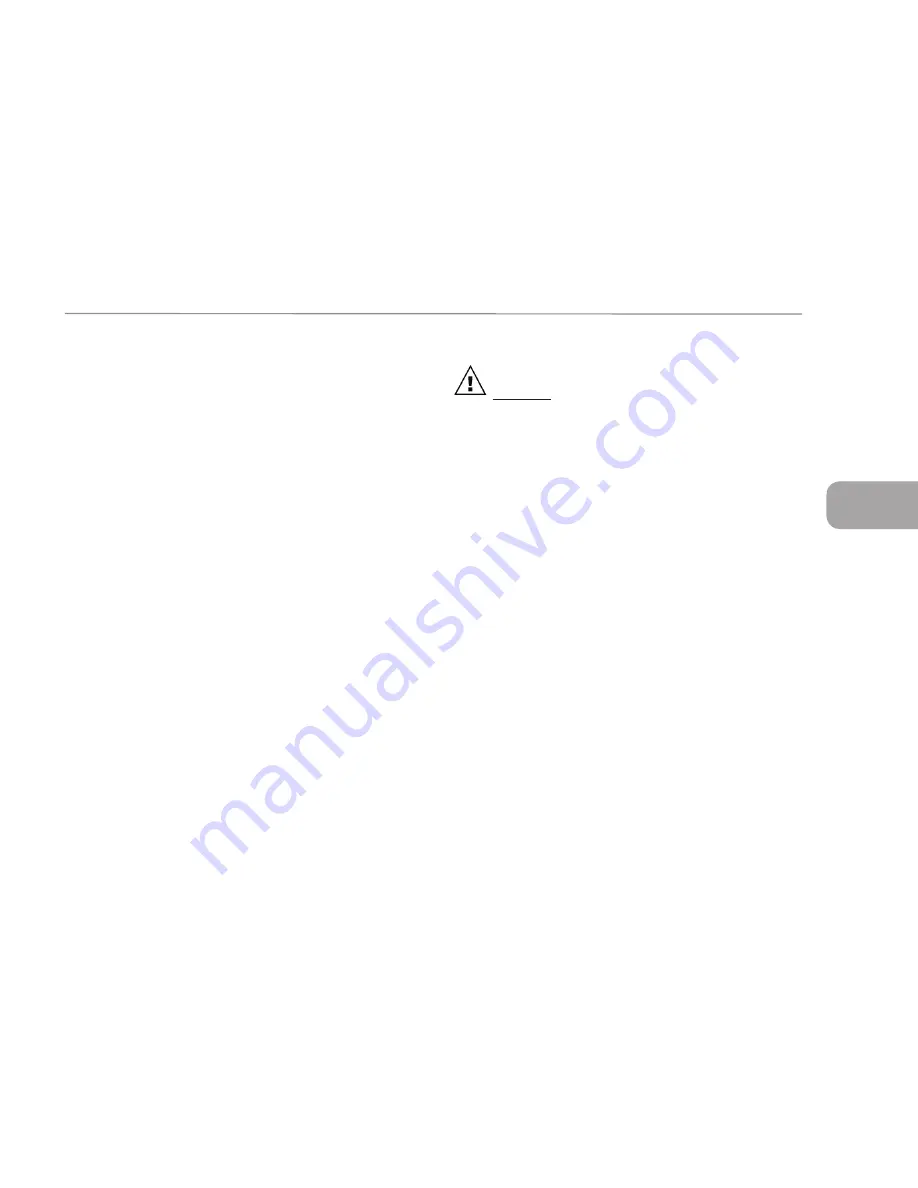
D
D - 10
EXTERIOR
yet different, in many ways to those used on cars and trucks. These differences are
important and require special attention to wheel nut torque both while the trailer is
new and throughout the trailer’s life.
Trailer wheels must carry much higher loads per wheel than passenger car or truck
wheels. Each wheel may carry 1000 pounds and higher. Furthermore, wheels on
tandem axle trailers do not steer, and are subjected to very high side load stress
whenever the trailer makes a tight turn. When you go around corners, especially
slow, tight ones, the wheels on your trailer are subject to these strong side loads.
This tends to flex the wheel and gradually loosen the wheel nuts. Although the ma-
terials and manufacturing methods are maximized for this kind of service, these extra
loads can cause stress, which can result in flexing and loosening of wheel nuts.
Before each trip and any time a wheel is replaced, be sure to tighten the wheel nuts,
following the sequence shown in the relevant lug pattern below. Set the torque
specification in three stages as seen in the chart. If the wheel was replaced, check
the torque every 50 miles of the first 200 miles of travel.
If you notice wheel wobbling or hear a rattling sound coming from a wheel, especially
at low speeds, a wheel lug nut may have come loose. This problem is usually caused
by improper tightening or by faulty or damaged lug bolt threads. If you have a reason
to believe a lug nut has come loose, safely stop the vehicle at the side of the road
as soon as possible. Put up warming devices. Remove the lug caps and check
the tightness of all the lug nuts. Tighten all lug nuts to the specified torque, using a
torque wrench. If lug stud threads are damaged or faulty, get professional service
help.
Wheel Compatibility
WARNING:
Do not mismatch wheels and tires.
Axle systems are installed with hubs and drums that are compatible with many
wheels used in the recreational vehicle industry that have matching bolt patterns. If
the original manufacturer installed equipment is in need of replacement, the wheel
manufacturer should be contacted for proof of compatibility prior to replacement and
use.
Customers replacing original equipment that has not been tested for compatibil-
ity must ensure the replacements are compatible to the hub and drum assembly
installed. Such elements of compatibility include, but are not limited to:
·
Diameter of the hub-mounting surface.
·
Stud length and diameter.
·
Location and number of studs.
·
Center hold diameter for the wheel.
·
Wheel mounting offset from the rim center.
·
Rated capacity of the wheel.
·
Wheel fastener torque.
·
Wheel nut size and shape.
Impact of any added wheel accessories (such as decorative center caps) that could
affect proper seating of the wheel to the hub surface.
Certain tests are recommended by the manufacturer’s of factory installed equipment,
such as the cornering fatigue test based on SAE J1095/SAE J267 and field tests,
are recommended for all wheels and rims to be installed in place of original factory
equipment. Contact the wheel manufacturer to verify compatibility with the factory
installed equipment prior to replacement.
Содержание INTERNATIONAL CCD
Страница 1: ...A TRAILERING GUIDE AIRSTREAM OWNERS MANUAL INTERNATIONAL CCD...
Страница 6: ...INTRODUCTION 2008 INTERNATIONAL NOTES...
Страница 16: ...A WARRANTY AND SERVICE A 9 MAINTENANCE RECORD DATE DEALER SERVICE PERFORMED DATE DEALER SERVICE PERFORMED...
Страница 23: ...B B 7 TOWING Notes...
Страница 29: ...B B 13 TOWING NOTES...
Страница 95: ...H H 6 APPLIANCES NOTES...





































